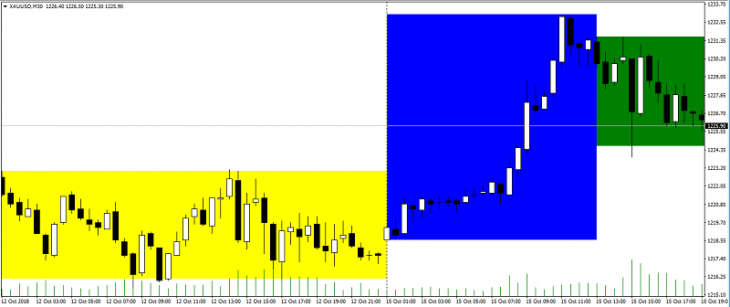
Теория Доу – азы технического анализа.
Теория Доу – это теория поведения финансового рынка, которая применима к валютному, фондовому и сырьевому рынку. При этом она разрабатывалась исключительно на фондовом рынке. Теория Доу содержит следующие постулаты: тренд имеет три фазы, цена учитывает всё, объём подтверждает тренд, индексы согласованы. Также на работах Чарльза Доу существует и множество других теорий, но вышеупомянутые теории можно считать основными.
Теорию Доу смело можно назвать прародителем технического анализа, поскольку данные теории в той или иной мере встречаются в большинстве современных теорий рынка. При этом, несмотря на глобальную компьютеризацию, данные теории также остаются актуальными, поскольку полностью объясняют саму природу рынка.
Немного истории
Чарльз Доу и Эдвард Джонс работали в новостном бюро на Уолл-стрит, где они и познакомлюсь, и в дальнейшем основали компанию Dow Jones & Company в 1882 году. Данная компания со временем превращается в полноценную газету The Wall Street Journal, которая до сих пор выступает одним из самых авторитетных изданий мира.
В 1893 Доу создаёт промышленный индекс DowJones, который в дальнейшем превращается в DOW 30 и включает так называемые «голубые фишки». В период с 1851 по 1902 года Чарльз Доу публикует серию статей, на основе которых в дальнейшем и будут разработаны теории, которые и назовут теориями Доу.
Тренд имеет три фазы
По теории Доу любой тренд имеет три фазы. Вникая в работы Чарльза Доу и других авторов, можно найти множество особенностей и условий, что значительно усложнит воспринятие материала, поэтому данные теории будут изложены максимально просто, на сколько это возможно без потери основной идеи.
Тренд имеет три фазы: накопление, участие и реализация или насыщение.
- Накопление подразумевает под собой некую консолидацию цены в узком торговом диапазоне, флэте. Такие периоды на рынке часто называют затишьем, когда фактически нет чётко выраженного тренда, а цена движется в устоявшемся боковом диапазоне. При этом участники рынка постепенно накапливают торговый объём перед движением.
- Участие – это фаза непосредственного движения рынка, что может быть вызвано как какими-то действиями, так и критичным накоплением торгового объёма. Это в итоге и определяет движение рынка в том или ином тренде.
- Насыщению отвечает та часть тренда, когда цена переходит к коррекции, а драйвер, который определял тренд, себя исчерпает. Инвесторы в данной фазе закрывают позиции и выходя с рынка, тем самым снижая торговый объём и замедляя тренд.

Жёлтая зона – накопление, синя зона – участие, зелёная зона – насыщение.
Подытожив, можно сказать, что любой тренд можно разбить на три зоны: формирование, отработку и коррекцию. У каждой зоны есть свои особенности и условия. Это позволяет в той или иной мере спрогнозировать дальнейшее поведение цены. При этом на данной модели движения основаны многие тактики и теории.
В следующей статье рассмотрим теорию: «цена учитывает всё».
Антон Ганзенко